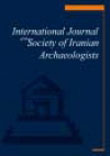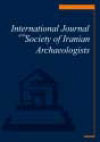فهرست مطالب

International Journal of the Society of Iranian Archaeologists
Volume:3 Issue: 5, Winter-Spring 2017
- تاریخ انتشار: 1396/03/31
- تعداد عناوین: 8
-
-
Pages 1-12Abstract: The Warwasi (Iran) sequence contains Early Zagros Aurignacian, Late Zagros Aurignacian, and Zarzian lithic assemblages. By examining attributes of the lithic assemblages from each of the 10 cm arbitrary levels, several patterns characteristic of each of chronological block of deposits emerge. These document aspects of how the Warwasi rockshelter was used at certain points in time, but are not necessarily statements about base versus task camps or duration of site visits. This is because each level and each chronological block represents time-averaged activities (tasks, discard, and artifact transport) that form cumulative palimpsests. While the patterning at Warwasi provides a view of change over time for this site, this sequence cannot automatically be widely or broadly applied to other sites in the Zagros Mountains region. Comparisons to the Upper Paleolithic cumulative palimpsest deposits at Yafteh Cave and Ghār-e Boof suggest why such comparisons must be carefully considered.Keywords: Zagros Aurignacian, Zarzian, Chipped Stone Industry, Warwasi, Gh?r-e Boof
-
Pages 13-22Tapeh Mahtaj is the earliest known occupation that has yet been discovered in the eastern plains of southwestern Iran. The site contains Pre-Pottery Neolithic deposits, ca. 40 cm in depth. The available finds suggest that the site was seasonally occupied during the second half of the 8th millennium bc. Three occupational phases were recognized at the site. The upper levels witnessed the introduction of obsidian into the region and also contained a large amount of grinding stones that were not in their primary context. Tapeh Mahtaj provides crucial information on the appearance of agriculture in the plains, which were closer to the coast line 10,000 years ago than today. This issue provides us with information on the Neolithization of the Persian Gulf Oasis. Keywords: .Keywords: Pre-Pottery Neolithic, Tapeh Mahtaj, Behbahan, Persian Gulf Oasis
-
Pages 23-30The prehistoric Bakun culture of Fars during the halcolithic period (i.e. the fifth millennium bce), is unparalleled among the contemporaneous cultures of Iran with regard to the diversity of its pottery techniques and creating specific geometric, animal, and human motifs. In this period, very diverse forms of pottery were produced by full-time expert potters. Toll-e Rahmatabad, located in the Kamin Plain of Pasargadae district, is one of the prehistoric regions which acted as a pottery production center during the fifth millennium bc in the Middle Bakun Period. In archaeological excavations carried out in this site during three seasons, direct archeological evidence of production and thousands of pieces of pottery belonging to the mentioned cultural period were discovered. In the present study, the relationship between the form and design in these ceramics was examined by using statistical linear models and SPSS Software. The significance level in all the tests was set at 0.05. The results of data analyses indicated a significant relationship between the form and design of pottery during the Middle Bakun Period at Toll-e Rahmatabad.Keywords: Bakun, Toll-e Rahmatabad, Statistical Linear Models, Form, Design.
-
Pages 31-44During the approximately 2500-year history of the site (ca. late-5th to early-2nd millennium bce), Tepe Hissar experienced a number of cultural, economic, and social transformations, which were accompanied by conflict, population movements, an increase in industrial activities, as well as episodes of site abandonment and reoccupation. This study investigates the impact of these socio-culturaleconomic changes on the health of the people buried at Tepe Hissar. This study examines the pathological indicators of nutritional stress and skeletal metabolic disease using a sample of 313 adult individuals, stratified by sex and age, as well as by chronology. The chi-square test was employed to compare the significant differences in the prevalence of metabolic disease within and between the Tepe Hissar populations grouped by sex and age category. For those samples too small to be subjected to chi-squared significance testing, Fisher’s exact test was used. Both calculations were conducted in Excel and SPSS 20. The results of these tests showed that males and females of all age groups from each of the three periods at Tepe Hissar experienced similar episodes of health and stress during their lives. Specifically, approximately half of the individuals from each period experienced some form of metabolic skeletal disease. Statistical analyses did not show any significant increase or decrease in the prevalence of nutritional stress or other metabolic diseases among this population between periods. The results of this research indicate that the socio-cultural-economic changes and events that occurred at this site, particularly during Hissar II and III, did not have a significant impact on the general health and disease of the population. This research suggests that the society at Tepe Hissar had access to similar levels of food resources and experienced similar living conditions over time from the late-5th to the early-2nd millennium bce. The high rate of metabolic bone diseases in each period, however, could have been due to exposure to toxic elements such as lead and arsenic which were widely utilized in metallurgical production at Tepe Hissar throughout its history.Keywords: Metabolic Diseases, Human Skeletal Remains, Chalcolithic, Bronze Age, Lead, Arsenic Poisoning, Tepe Hissar.
-
Pages 45-54Kohne Tepesi, an Early Bronze Age and Parthian site in East Azerbaijan Province, Northwestern Iran, was excavated under the rescue project of Khoda Afarin Dam Basin in 2007 and 2008. The chipped stone industry from the Early Bronze Age is mostly made from two different raw materials: chert and obsidian. Typo-technological analyses indicates that the chert assemblage is different from the obsidian assemblage in being more specialized and producing formal tools. Bifacial sickle elements are exclusively made from chert, whereas the assemblage from obsidian consists mostly of tiny chips from modification of irregular bifacial core-tools. In this research Mann-Whitney and chi-square tests are applied for assessing of congruence among chert and obsidian assemblages. The results clearly indicate that there is an economic pattern in raw material selection in Early Bronze Age chipped stone industry of Kohne Tepesi.Keywords: Bronze Age, Kura-Araxes Culture, Chipped Stone Industry, Obsidian, Statistics
-
Pages 55-60Studying the human remains and analyzing demographic problems, sex ratios, and mortality rates in Shahr-e Sokhta (The Burnt City in Persian) can prove highly valuable in identifying the ancient peoples of the region, thus shedding light on a significant transitional period between the prehistoric and the historic eras. In this study, a gender-based analysis was conducted on the anthropometric data extracted from the existing reports on Shahr-e Sokhta III via two statistical methods, namely, the life table method and the Kaplan-Meier method. Of the 370 studied skeletons, 218 belonged to women and 152 to men. Two statistical survival analysis methods were used to examine the skeletal remains of men and women over the age of 12. The results (P-value = 0.143) of the Kaplan- Meier method (using the log-rank test) did not reveal a statically significant difference between age at death distributions obtained for men and women. However, the life table method (via the Wilcoxon signed-rank test) indicated a statically significant difference between men and women in terms of age at death distributions (P-value = 0.003). The results of the life table method obtained in this study are in agreement with those indicated in the reports on Shahr-e Sokhta III. Therefore, we concluded that the contradiction in the results obtained through the Kaplan-Meier and the life table methods might be due to the different weightings attributed in the log-rank test and the Wilcoxon test. For this reason, we propose that similar studies be conducted in other ancient sites where cemeteries with skeletal remains have been unearthed.Keywords: Shahr-e Sokhta, Survival Analysis, Life Table, Kaplan-Meier, Age at Death.
-
Pages 61-72In this paper we compare the subsistence economies based on the study of the faunal remains of two Iron Age settlements, Haftavan Tepe and Sagzabad in two different environments in northwestern Iran. These two examples are used to illustrate the use of various statistical methods in archaeozoology to test the significance of the quantitative and qualitative data. This analysis includes various measures for bone count and also for testing the morphological variability in various animal populations. By using Chi- Squared test, we show that although the two assemblages are very different is size, they still can be compared. In both Haftavan Tepe and Sagzabad, cattle is an important component of the subsistence economy. We compared these two populations geographically distant. With a Student t test we demonstrate the existence of two morphologically different cattle population during the Iron Age in northern part of the Iranian Plateau. In this paper, we aimed at demonstrating the importance of statistical methods in anthropological discussions.Keywords: Statistical Analysis, Archaeozoology, Subsistence Economy, Haftavan Tepe, Sagzabad, Iron Age
-
Pages 73-91Characterology of individuals in Sassanian memorial artwork involves benefits from the simultaneous use of detailed historical information and archaeological evidence. In the present paper, the identity of the Iranian nobleman, who seems to be leading the captive Roman Caesar towards the King, Ardashir in the rock relief of Darabgerd, has been challenged. For this reason, investigating the governmental structure of the Sassanid dynasty, the hierarchy of the ranks, the temporary confusion about the existence and function of some positions, as well as the equivalent terms representing them are unavoidable. The historical content of Darabgerd rock relief, displaying Ardashir I’s victory over the Romans, has shifted the authors’ mentality in identifying the mentioned figure onto a military high rank. Therefore, differing with Hinz (2006:206-207), who has attributed this figure to “Bidaxš of Shapur”, a character whom he believes to be the commander of the armed forces, the authors insist on attributing this figure to “Pāpak Hazārpat” as the commander of the royal guard. A historical approach, conducted as a comparative study of the historical narratives associated with the functional domain of the ranks of “Bidaxš”, “Hazārpat”, “Sepahbad” and “Asbbad” with the positions of the above-mentioned ranks in inscriptional evidence of Shapur I in the Ka'ba-ye Zartosht (meaning the Cube of Zoroaster) and Nerseh at Pāikuli and also the comparative picturology among some Sassanian memorial artwork, has attempted to explicate this ascription.Keywords: Sassanian, Darabgerd Rock Relief, Bidax?, Haz?rpat, Ka'ba-ye Zartosht, Historical Narratives, Comparative Picturology


